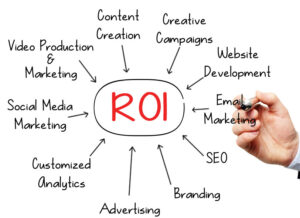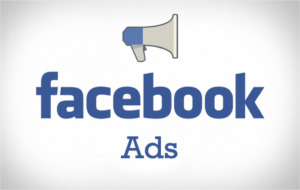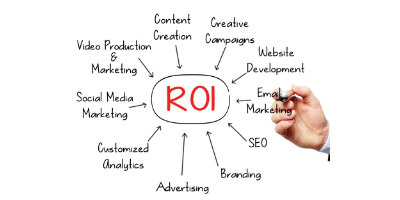
Well all know that diversification is the key to sound investing, and I think that same approach should be applied to your online marketing strategy. You want to implement internal and external marketing tactics, as well as organic and pain tactics. But how do you balance both?
First, get to know your stats. Before you invest any money in advertising make sure you have Google Analytics installed. In a perfect world I’d say wait 6 months to a year to collect this data, but you could argue that many new businesses need immediate exposure, thus they need to advertise from the start. That’s fine, just make sure you’re not only tracking web traffic, but also web conversions.
Next, how to divvy up your marketing budget? How much for organic vs. paid? Before we jump into that we need to look at the different tools and mediums we’re going to use for organic and paid advertising…
Organic:
- Blogging
- Press releases
- Videos
- Citations/directory listings
- Off-site articles (backlinks)
Paid:
- Google Adwords
- Bing/Yahoo
- Yelp
- Real Self

With the paid ads you have a lot of options. I’m not saying don’t invest in all of them. If you have the budget, why not? However, each of the advertising bullets listed above vary dramatically in cost and commitment. For example, Facebook ads are both cheap (as little as $5-10/day) and can be run one-time for as short of a time-frame as you’d like. Yelp, on the other hand, requires a six or twelve month commitment, and their plans can be over $2k/mo. With Adwords your can cancel at any time, but you can easily spend $5-10k/month.
Here’s my advice for investing in and utilizing each of the aforementioned ad mediums:
- Search engine ads (Google Adwords & Yahoo/Bing Ads): I’d start with AdWords here given their dominating market share. Start small, by targeting 3-4 procedures ($30/day minimum budget). Make sure you have really nice landing pages with great ‘calls to action’ to entice conversions. Consider using Lead Pages or Lead Boxes for creating landing pages. Track your progress over the first month or two and evaluate your leads. Then you can decide to stop the ads, keep them running ‘as is’, increase the budget, or ad new procedures (with an increased budget).
- Yelp: Again, start with a lower plan, especially since you’re locked into a contract. You can always increase this at any given time. As much as I’ve written about Yelp’s shadiness, there’s no disputing Yelp’s reach and relevance. I’ve seen this work for clients so I’ll put aside ethical grievances for results.
- Real Self: If you haven’t noticed, Real Self has a pretty dominating search engine presence. This leads to enormous amounts of traffic, which has helped Real Self become the go-to site for patients seeking information about surgical and non-surgical procedures. Before you consider investing to become a “Top Doc” (Pro account), or paying for spotlights, make sure you actively work on growing your reviews and answers. Shoot for at least 30 reviews and over 100 answers. The more time you put in to increase your reviews and answers the more effective your advertising will be.
- Facebook: The social network giant is the lowest hanging fruit when it comes to advertising because of the minimal investment required. You also have a plethora of demographic targeting options that you don’t with Google or Yahoo/Bing, including age, gender, interests and likes. One key with this tool is to run targeted ads that drive people to landing pages. Just like I mentioned with Google or Yahoo/Bing ads, you want these to be well-organized, with strong ‘calls to action’. Remember these calls to action don’t necessarily have to involve discounts.

Just remember that you need nail down your organic approach first before you start investing in advertising. Start with blogging as your core tactic. You can outsource your blogging, but make sure you properly review all content written on your practice’s behalf.
If you have any questions about developing a marketing plan or budget, or determining organic vs. paid marketing budgets, then give TRBO a call at 877-673-7096 x2. You can also leave us a note here.





